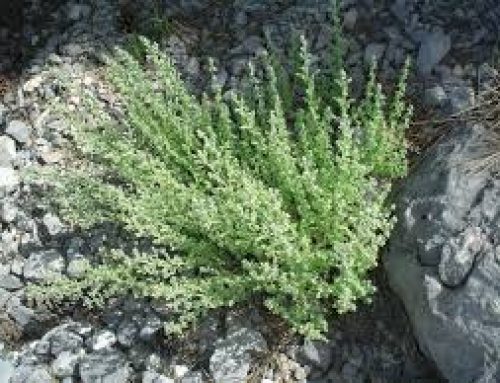A Natural Approach to Ebola Infection: Prevention and More

It is a dire catastrophe that even a single individual dies from Ebola virus infection. The infection, caused by a germ known as a filovirus, is highly fatal, killing some 50% of all those who are infected. In some instances, depending on the sub-type of the species, nearly 90% of the infected die.
The infection is caused by a bizarre virus called Ebola, a name derived from the area of which it originated, the Ebola River basin in the Congo.
It is also in a descriptive manner known as Ebola hemorrhagic fever, a condition caused by other viruses, although Ebola produces its most lethal form. The main symptoms of infection are virtually identical to flu: fever, chills, headache, weakness, vomiting, and diarrhea. Because of the severity of such symptoms this alone can cause death, usually due to shock. Yet, the symptoms also include the direst ones of all, the hemorrhagic ones. These symptoms and signs are the result of great damage done by the virus to the blood vascular system. In other words, direct damage by the virus causes the person to bleed internally, or hemorrhage, both within the internal organs and also into the skin.
It may take a week or more after infection for symptoms to manifest.
Even so, rather than the result of blood loss death occurs from shock.
Just how does the virus infect humans? Is it primarily airborne? Rather than airborne the primary means of contraction is through direct contact. For instance, infection results from direct contact with body fluids and secretions, commonly, blood, saliva, vomit, urine, and feces. Too, direct contact with the actively infected may also spread the condition. Incredibly, it can also occur through close/direct contact with the corpses of those who die from the disease.
First recognized in 1976, the germ has caused several fatal outbreaks. These outbreaks have occurred primarily in the Congo, Gabon, Uganda, and Sudan.
In addition, Ebola has occurred in the United States, with a sub-type infection developing in workers at an animal quarantine facility in Reston, Virginia. At least 4 people were infected by this sub-type, all of whom seemingly suffered no symptoms. Known as the Reston sub-type, additional outbreaks of the disease occurred in Texas and Pennsylvania, once again without symptoms and/or fatalities.
The source of the infection was monkeys housed in a facility in the Philippines that exported monkeys. A more curious source is swine in the area, which have now been determined to house the virus.
Swine may be the ultimate source in this case. The germ has been detected in farmers who are in contact with such pigs; however, they, too, show no symptoms.
According to the CDC’s Frederick A. Murphy one of the most essential observations regarding this condition is its sporadic nature. This can be explained by the concept of “natural reservoir.” Researchers have determined that the ultimate reservoir for the germ is the African fruit bat. Such bats live in all the regions of Africa where the outbreaks occur. Too, as a confirmation of the source of the infection these bats are eaten by people in the outbreak zones, especially in Central Africa.
Bats are also a reservoir of other killer viruses, including SARS and the Marburg virus.
Currently, in the spring of 2014 the infection has arisen in an area previously free of the disease, West Africa. From the initial outbreak in mid-March in Liberia it has spread to a number of West African countries, leading to 1000 cases and over 600 deaths.
Well known as the most extreme of all infectious agents, Ebola is almost impossible to handle safely in a research environment. There is no known medical cure for the condition – no established drug therapy and/or vaccine. To complicate matters it is also difficult to efficiently and/or rapidly diagnose the condition, that is through physically or chemically identifying the germ.
Back to the fruit bat. The fully vegetarian Gorillas love fruit. They also live in the same areas of the fruit bat. Ebola has decimated gorilla populations in West Africa. Some one-third of the population have died from the disease, causing the concern that they may well be rendered extinct in a matter of years.
The discovery of the virus in pigs has created a great deal of concern. This is in relationship to the possibility of direct transfer of the disease from pigs as a host to humans. Pigs are ideal hosts for creating potential pandemics of such infections. Within pigs the virus could pass through different mutations, with these animals acting essentially as mutational mixing vessels.
As demonstrated by Monath in the Journal of Infectious Diseases the vast majority of the cases of the original outbreaks occurred through “inter-human spread.” In other words, without direct contact with infected humans the disease will not occur.
Symptoms reiterated
The disease is characterized by the sudden onset of fever, weakness, including muscle weakness, headache, and sore throat. This is followed by yet another constellation of symptoms, including abdominal pain, vomiting, diarrhea, and rash. Rapidly, massive kidney and liver failure then occur. It gets more dire, as the person bleeds internally and also into the skin, dying of shock.
Other symptoms may give early hint of the disease. It may begin initially with red and itchy eyes and a skin rash. Few if any doctors would relate this to Ebola.
Treatment protocol
There is no known medical treatment for Ebola infecton. Even so, in many instances transmission can be prevented through vigorous hand-washing technique as well as the use of gloves and other protective gear.
There is a suspicion that Ebola may be transmitted by tiny insects such as mites or other crawling insects. This may explain the fact that the disease is transmitted by corpses.
The existence of infected mites must be curtailed. This is through natural spice oil-based antiseptic sprays. All areas of potential exposure to the infection must be sprayed liberally with Germ-a-Clenz spray. For anyone exposed to the infection the skin must be liberally coated with this spray.
There is also the issue of using potent spice oil complexes in the treatment of this viral infection. Prevention is also a key element. In this regard oil of wild oregano is ideal, since it is the safest known edible antiseptic which can be used by all disease contacts, all family members and more. If the edible type (Oreganol P73, it can even be given to children. Tests show that wild oregano oil kills all viruses thus for tested against it.
As a prevention take the edible form of oil of wild oregano, that is Oreganol P73, five to ten drops under the tongue multiple times daily. In active infectious cases take the oil sublingually every five or ten minutes, 10 or more drops. Take also OregaRESP preventively 2 capsules several times daily. For active infection take this 3 or more capsules of this supplement with plenty of fluid every 15 minutes or at least on the hour.
The wild oregano oil can also be taken as a gelcap, 3 three times daily for prevention and three or four capsules every few minutes in active infection.
As further prevention contact of any kind with the secretions of the infected must be avoided. Hand-washing technique must be thorough and Germ-a-Clenz and/or Oreganol oil of wild oregano can be used with the soap. Washing should be ideally done all the way to the elbows.
DISCLAIMER: This is not an attempt to make claims for any company. Rather, this is merely a means of disseminating information for purposes of knowledge, which is the knowledge of the existing of natural germ- and mite-killing agents. No claims are made by any maker of such supplements regarding any health condition. Statements are exclusively mine as a matter of free speech and also as a discussion of what would be ideal in protecting people from the ravages of this disease.
Sources:
http://jid.oxfordjournals.org/content/179/Supplement_1/S127.full






